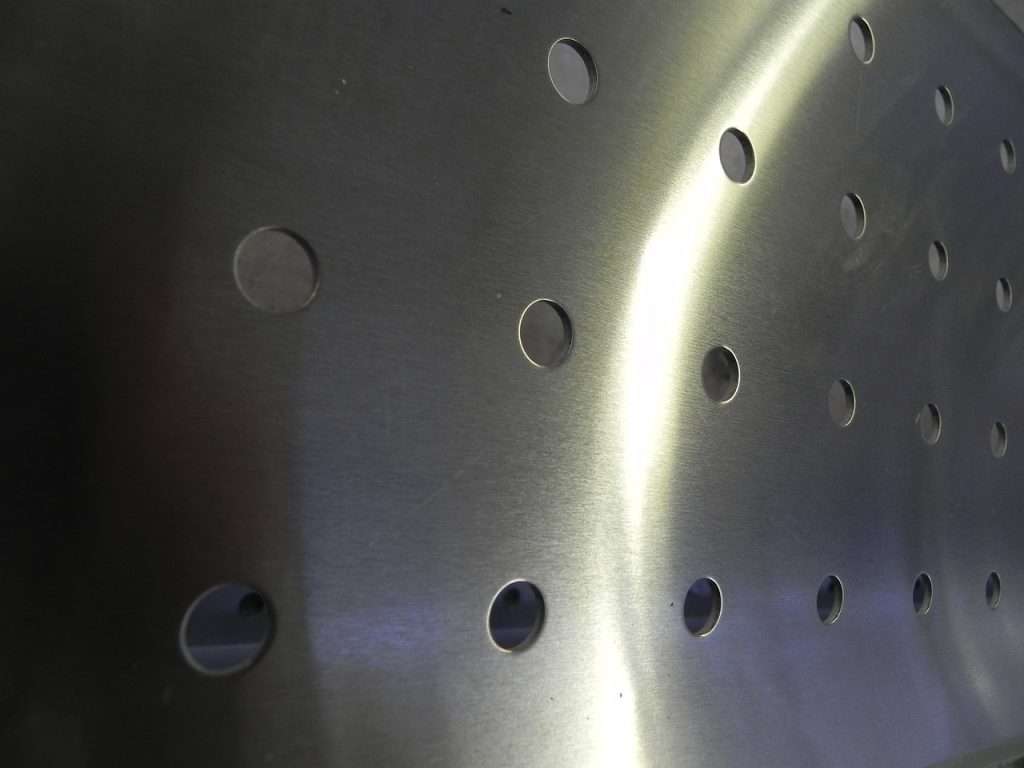
Punched hole in steel sheet
Sheet metal punching is a widely used manufacturing approach in various industries, including automotive, aerospace, and construction. The process entails using a metal punch to create holes or desired shapes in sheet metal through deformation or removal.
In recent years, the demand for high-quality sheet metal components has grown exponentially. As a result, manufacturers are constantly seeking ways to improve the punching process and maximize productivity. To achieve this, it is crucial to understand the factors that impact precision and accuracy in sheet metal punching and implement best practices to optimize the process. This article will discuss the sheet metal punching process, precision & accuracy in punching, hole punch dies, and troubleshooting of common punching problems.
What is Precision and Accuracy in Sheet Metal Punching?
Precision and accuracy are critical factors in sheet metal punching, as they significantly influence the quality of the final product. Precision refers to the ability of the process to produce consistent results, while accuracy refers to the degree to which the punched holes or shapes match the intended design. In other words, a precise punching process will produce the same results every time, while an accurate process will produce results that are very close to the design specifications.
It is important to note that while precision and accuracy are related, they are not the same thing. A process can be precise but not accurate, or accurate but not precise. Therefore, it is important to strive for both precision and accuracy in a punching process to ensure consistent and high-quality results.
How to ensure precision and accuracy in punching?
Several factors can affect precision and accuracy in sheet metal punching, including the type and condition of the punch and die, the punching force, and the quality of the sheet metal. By carefully controlling these factors, manufacturers can achieve a high degree of precision and accuracy in their punched components.
A precise punching process requires a high level of control over the variables involved, such as the pressure, speed, and alignment of the punch. Additionally, the quality of the punching tool and the material being punched can also have an impact on precision.
On the other hand, an accurate punching process requires precise design specifications and the precision of the punching process. If the design specifications are not precise, it can be difficult to achieve accurate results, even with a precise punching process. However, if the design specifications are clear and precise, a precise punching process can help achieve accurate results.
Related:
Role of Punching Force in Accuracy and Precision
Accurate punching force calculations are essential for achieving precision and accuracy in sheet metal punching. The punching force is the amount of energy required to create a hole or shape in the sheet metal. Calculating the correct force ensures that the punch and die can effectively penetrate the material without causing excessive wear or damage to the tools or the workpiece. A punching force calculator can be a valuable tool for determining the appropriate force for a specific material and thickness.
The formula for punching force calculation is:
Punching force (in tons) = Material thickness (mm) x strength ( N/mm^2) x Punching area (mm^2) / 1000
However, there are various offline and online tools for punching force calculation, where you just need to input the material properties, thickness, and desired hole or shape dimensions and the tool or calculator can provide an accurate estimate of the required punching force.
Why Selection & Maintenance of Hole-punching Dies is Crucial for Precision and Accuracy?
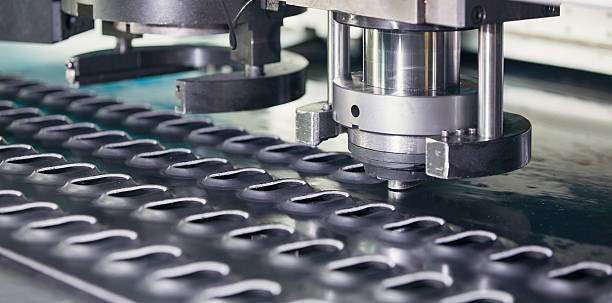
Metal perforating industrial machine
The selection and maintenance of sheet metal hole punch die set for a specific project play a crucial role in achieving precise and accurate punched parts. Punch and die sets are available in various sizes, shapes, and materials to accommodate different types of sheet metal and designs.
Related:https://proleantech.com/sheet-metal-materials-types-applications-and-more/
- When selecting a punch and die set, operators should consider factors such as the material type, thickness, and desired hole or shape dimensions.
- The punch and die should be compatible with the punching machine being used.
- Proper maintenance of the punch and die sets are also essential for maintaining precision and accuracy. This includes regularly inspecting the tools for wear or damage, sharpening or replacing worn components, and cleaning and lubricating the tools to prevent corrosion and ensure smooth operation.
Tips for Maximizing Productivity in Sheet Metal Punching
To maximize productivity in sheet metal punching, manufacturers should consider the following tips:
1. Invest in advanced punching technology
Modern punching machines offer increased precision, accuracy, and productivity through advanced features, such as CNC control, automatic tool changers, and high-speed punching capabilities. Investing in advanced technology can help manufacturers stay competitive and meet the growing demand for high-quality sheet metal components.
2. Implement automation
Incorporating automation into the punching process, such as robotic material handling or automated loading and unloading systems, can help reduce labor costs and improve efficiency. Automation can also reduce the risk of human error, resulting in more precise and accurate components.
3. Optimize the production workflow
Streamlining the production workflow, from material handling and tooling setup to programming and nesting, can help minimize downtime and increase productivity. Implementing lean manufacturing principles, such as continuous improvement and waste reduction, can further optimize the production process.
4. Employee training and development
Properly trained and skilled operators are essential for achieving precision, accuracy, and productivity in sheet metal punching. Investing in employee training and development can help ensure that operators are knowledgeable about best practices and capable of effectively managing the punching process.
Troubleshooting Common Issues in the Punching Process
Despite careful planning and execution, issues may still arise during the sheet metal punching process. Some common issues and their potential solutions include:
| Common Issues | Potential Solutions |
| Punching burrs | Adjust the punching force, use a sharper punch, or employ a deburring process after punching. |
| Misaligned holes or shapes | Check and adjust the alignment of the punch and die, ensure proper clamping of the sheet metal, or use a slower punching speed. |
| Tool wear or damage | Inspect and maintain the punch and die regularly, use the correct punching force, or select a more durable tool material. |
Conclusion
Achieving precision and accuracy in sheet metal punching is essential for maximizing productivity and meeting the growing demand for high-quality components. By understanding the factors that impact precision and accuracy, implementing best practices, and addressing common issues in the punching process, you can optimize the production workflow and ensure the delivery of precise and accurate sheet metal components.
At Prolean, we have automated punching equipment and a dedicated team of engineers for punching and other sheet metal fabrication approaches. If you have any questions or need sheet metal punching services, please don’t hesitate to contact us.
FAQ’s
What is sheet metal punching?
Sheet metal punching is a manufacturing process that involves using a metal punch to create holes or shapes in sheet metal through deformation or removal.
Why are precision and accuracy important in sheet metal punching?
Precision and accuracy are important because they directly influence the quality of the final product. A precise and accurate punching process will produce consistent results that closely match the design specifications.
How can I improve precision and accuracy in my sheet metal punching process?
Improving precision and accuracy requires a combination of proper tool selection and maintenance, accurate punching force calculations, implementing best practices in the punching process, and addressing common issues that may arise during production.
How can I maximize productivity in sheet metal punching?
Maximizing productivity involves investing in advanced technology, implementing automation, optimizing the production workflow, and investing in employee training and development.
Why is proper maintenance of punch and die sets essential for achieving precision and accuracy in sheet metal punching?
To maintain precision and accuracy, it is crucial to properly maintain punch and die sets. This involves regular inspection, replacing or sharpening worn components, and cleaning and lubricating tools. Neglecting maintenance can result in poor-quality components and shorten tool life.

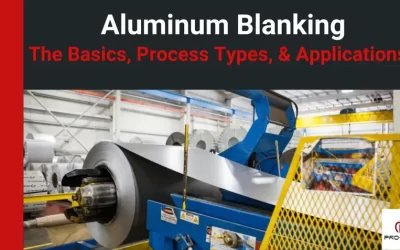
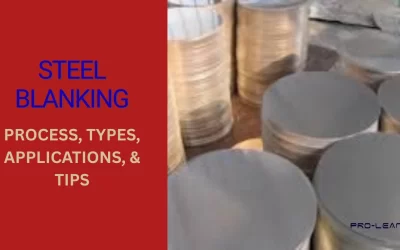
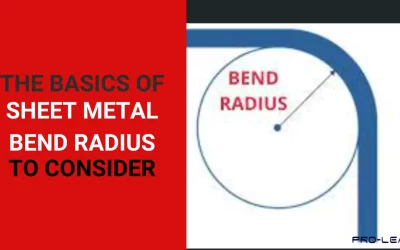
0 Comments